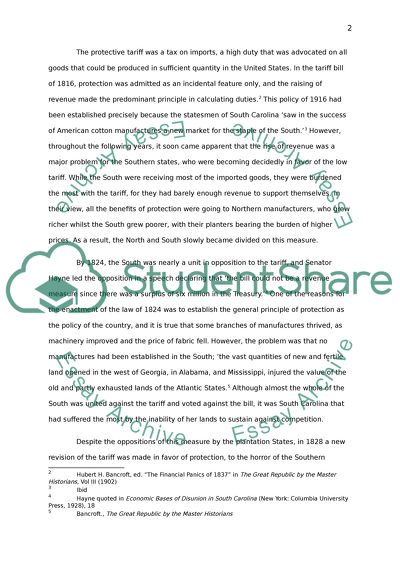Cite this document
(The Nullification Crisis of 1832 Coursework Example | Topics and Well Written Essays - 2000 words, n.d.)
The Nullification Crisis of 1832 Coursework Example | Topics and Well Written Essays - 2000 words. Retrieved from https://studentshare.org/history/1549770-nullfication-crisis
The Nullification Crisis of 1832 Coursework Example | Topics and Well Written Essays - 2000 words. Retrieved from https://studentshare.org/history/1549770-nullfication-crisis
(The Nullification Crisis of 1832 Coursework Example | Topics and Well Written Essays - 2000 Words)
The Nullification Crisis of 1832 Coursework Example | Topics and Well Written Essays - 2000 Words. https://studentshare.org/history/1549770-nullfication-crisis.
The Nullification Crisis of 1832 Coursework Example | Topics and Well Written Essays - 2000 Words. https://studentshare.org/history/1549770-nullfication-crisis.
“The Nullification Crisis of 1832 Coursework Example | Topics and Well Written Essays - 2000 Words”. https://studentshare.org/history/1549770-nullfication-crisis.


